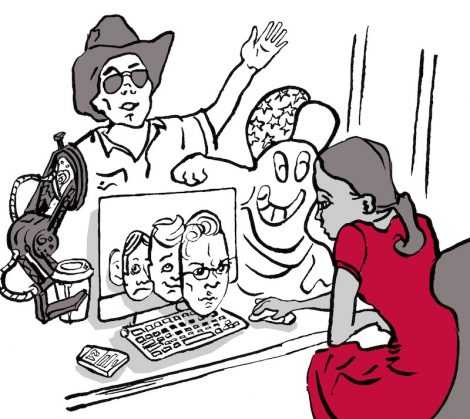Hang-over pictures on social networks do (not) harm job applicants

The usage of social networks for recruiting activities is increasing. Between 2006 and 2009 the number of US recruiters using social networks as a platform for searches to identify potential applicants went up from 12 percent to 45 percent. Recruiters often lack sufficient information, especially regarding the group of younger graduates which led to their increasing interest in sources such as private and professional social networks.
The question though is if recruiters look at member profiles (e.g. on facebook, xing or linkedin) differently compared to the applicants themselves? Do they care about the same types of information?
But what is a recruiter typically looking for? Bangerter, Roulin & König (2012) came up with a new framework for personnel selection, which is based on signalling theory. Mutual interests between signallers and receivers are shaping signalling systems. Applied to the discussed topic, organizations look for so called honest signals of applicants’ ability and commitment to the potential employment relationship. It is characteristic for signals of honesty that they are difficult to fake. Typically, these signals are e.g. education, job experiences, or references/ recommendations, which enable an organization to assess applicants’ abilities or skills as well as their Person-to-Job-Relation. Additionally, Recruiters compare such signals with organizational values and culture to assess the fit between an applicant and the organization. This is the so called Person-to-Organization-Relation.
The study „Social Networking Websites in Personnel Selection“ analysed the following hypotheses:
(1) „Recruiters prefer to gather information to predict Person-to-Job fit from professional rather than from personal social networks, but (1b) information to predict Person-to-Organization fit from personal rather than from professional social networks.“
and
(2) „Potential applicants perceive recruiters to prefer gathering information to predict Person-to-Job fit from professional than from personal social networks, but information to predict Person-Organization fit from personal than from professional social networks.“.
The study provided evidence to confirm the first hypothesis: recruiters prefer gathering information about the Person-to-Job fit using professional social networks like LinkedIn. Furthermore, recruiters rather use Facebook or other personal social networks to assess the Person-to-Organization fit of an applicant or a potential applicant.
The results of the study support Hypothesis 2 as well: potential applicants have a clear understanding of recruiters’ analysis of Person-to-Job fit using professional social networks and personal social networks to assess the Person-to-Organization fit by using personal social networks.
However, recruiters view profiles differently than applicants do. They attribute a greater value to ‘traditional’ information categories such as professional information, personal information, and the number of friends; they are much less interested in more intimate information such as private update messages or pictures. Conversely, applicants focus to a greater extent on pictures and private update messages. Due to these differences in information focus, potentially “faux pas pictures” on social network profiles are less interesting for recruiters and, therefore, cause much less harm than conventional wisdom might tell us.
In summary, recruiters and applicants pursue different strategies to analyse profiles but tend to infer similar personality traits from such profiles.
Sources

